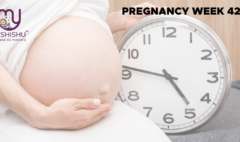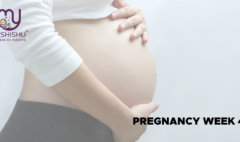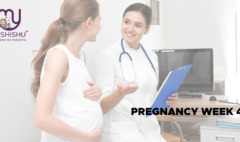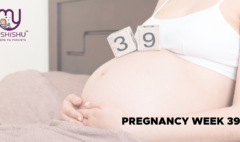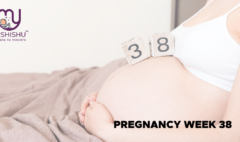Pregnancy 2nd Trimester: A Comprehensive Guide
Pregnancy 2nd Trimester: A Comprehensive Guide
Embark on the journey of pregnancy 2nd trimester with confidence and knowledge. This transformative period, often dubbed the “honeymoon phase,” brings about significant physical changes, emotional milestones, and newfound energy. From the joy of feeling your baby’s first movements to the relief of bidding farewell to morning sickness, the second trimester is a time of celebration and self-discovery. Dive into this guide to explore the wonders of fetal development, practical self-care tips, and strategies for navigating the emotional rollercoaster of pregnancy. Embrace the journey with grace and optimism as you prepare to welcome your little one into the world.
Introduction
Welcome to the pregnancy 2nd trimester, a period filled with anticipation, wonder, and growth. As you transition from the initial challenges of the first trimester, you’ll find yourself entering what many describe as the “golden period” of pregnancy. During these weeks, your body undergoes remarkable changes to accommodate the life blossoming within you, while your emotions may fluctuate as you come to terms with the reality of impending parenthood. In this guide, we’ll delve into the intricacies of the second trimester, from the physical transformations to the emotional journey, offering insights and advice to support you every step of the way.
What is pregnancy 2nd trimester?
The pregnancy 2nd trimester spans from weeks 13 to 27, marking a significant stage of development for both the mother and the baby. Often considered the most enjoyable phase of pregnancy, the second trimester is characterized by reduced symptoms of morning sickness and fatigue, accompanied by a surge in energy levels and an increased sense of well-being.
During this time, the baby undergoes rapid growth and development, with major organs and body systems beginning to form and mature. Expectant mothers may start to feel their baby’s movements, a thrilling milestone known as “quickening.”
Additionally, many women experience a noticeable baby bump as the uterus expands to accommodate the growing fetus. While the second trimester brings relief from some first-trimester discomforts, it also presents new challenges and experiences, making it an essential period for prenatal care, self-care, and emotional preparation for the journey ahead.
How does the baby develop in the pregnancy 2nd trimester?
During the pregnancy 2nd trimester, the baby undergoes remarkable growth and development, laying the foundation for a healthy and thriving life. By week 13, most of the baby’s major organs and body systems have formed, and they continue to mature and refine throughout the trimester. Rapid growth is evident as the baby’s length increases and its features become more defined.
By the halfway point of the pregnancy, around week 20, the baby is approximately the size of a banana, with fully formed limbs, fingers, and toes. During this time, the baby’s senses begin to develop, allowing them to perceive light, sound, and touch. Expectant mothers may start to feel their baby’s movements, known as quickening, which provides a tangible connection to the growing life within. As the second trimester progresses, the baby gains weight builds muscle tone, and prepares for the next stage of development in the third trimester.
What happens to the body during pregnancy 2nd trimester?
During the pregnancy 2nd trimester, the mother’s body undergoes significant changes to accommodate the growing baby and prepare for childbirth. One notable change is the expansion of the uterus, which continues to grow rapidly to accommodate the developing fetus. This often leads to a visible baby bump, signaling to the world the miracle of life within. Many women experience relief from early pregnancy symptoms such as morning sickness and fatigue during this trimester as hormone levels stabilize and the body adjusts to the pregnancy.
However, the pregnancy 2nd trimester also brings its own set of physical challenges. Women may experience discomforts such as backaches, round ligament pain, and increased urination due to the pressure exerted by the growing uterus on surrounding organs. Hormonal changes can also lead to skin changes, including the development of stretch marks and the darkening of the skin in certain areas.
Despite these challenges, many women report feeling a surge in energy and a renewed sense of well-being during the second trimester, allowing them to fully embrace the joys of pregnancy. With proper self-care, including regular exercise, a balanced diet, and adequate rest, women can navigate the physical changes of the second trimester with grace and confidence, knowing that each milestone brings them one step closer to meeting their precious little one.

Symptoms and causes
Symptoms and Causes of pregnancy 2nd trimester:
- Increased Energy Levels: Many women experience a boost in energy during the second trimester, which can be attributed to stabilized hormone levels and relief from early pregnancy symptoms like morning sickness.
- Visible Baby Bump: The uterus expands rapidly during the second trimester to accommodate the growing fetus, resulting in the noticeable development of a baby bump.
- Relief from Morning Sickness: For the majority of women, the nausea and vomiting associated with morning sickness diminishes or disappears entirely by the second trimester, allowing for a more comfortable pregnancy experience.
- Fetal Movement (Quickening): Around 18–20 weeks, expectant mothers may begin to feel their baby’s movements, known as quickening, which is a reassuring sign of fetal development and activity.
- Backaches and Round Ligament Pain: As the uterus grows and shifts, it can put pressure on the lower back and pelvic area, leading to discomfort and occasional pain.
- Skin Changes: Hormonal fluctuations during pregnancy can cause changes in the skin, including the development of stretch marks, darkening of the skin in certain areas (such as the nipples and inner thighs), and the appearance of a linea nigra (a dark line that runs from the belly button to the pubic bone).
- Increased Urination: The growing uterus can exert pressure on the bladder, leading to more frequent urination during the second trimester.
- Varicose Veins: The increased volume of blood circulating in the body during pregnancy, combined with the pressure exerted by the growing uterus, can contribute to the development of varicose veins, particularly in the legs.
- Heartburn and Indigestion: As the uterus expands, it can push against the stomach, leading to symptoms of heartburn and indigestion.
- Emotional Changes: While the second trimester is often characterized by increased energy and well-being, expectant mothers may still experience mood swings and emotional fluctuations as they navigate the physical and emotional challenges of pregnancy.
Diagnosis and tests
Diagnosis and Tests during Pregnancy, 2nd Trimester:
During the pregnancy 2nd trimester, expectant mothers undergo a series of routine tests and screenings to monitor their health and the development of their baby. These tests are designed to detect any potential complications and ensure the well-being of both mother and child. Here are some common diagnostic procedures and tests performed during the second trimester:
- Ultrasound: An ultrasound scan is typically performed around 18–22 weeks to assess the baby’s growth, development, and anatomy. This imaging test allows healthcare providers to visualize the baby’s organs, measure the size of the baby, check the placenta and amniotic fluid levels, and determine the baby’s sex if desired.
- Multiple Marker Screening (Quad Screen): This blood test, usually done between 15 and 20 weeks, screens for certain markers that may indicate an increased risk of chromosomal abnormalities such as Down syndrome or neural tube defects like spina bifida.
- Glucose Screening Test: Also known as the glucose challenge test, this screening is typically conducted between 24 and 28 weeks to check for gestational diabetes. It involves drinking a sugary solution and then having blood drawn to measure blood sugar levels. If the initial test indicates elevated glucose levels, further testing may be required to confirm a diagnosis of gestational diabetes.
- Rh Factor Screening: Rh factor screening is performed to determine whether a woman is Rh-positive or Rh-negative. If an Rh-negative mother carries an Rh-positive baby, there is a risk of Rh incompatibility, which can lead to complications in future pregnancies. Rh-factor screening helps healthcare providers identify this risk and take appropriate measures to prevent complications.
- Anatomy Ultrasound: Around 18–22 weeks, an anatomy ultrasound is performed to assess the baby’s anatomy in detail, including the brain, heart, spine, limbs, and internal organs. This comprehensive scan helps detect any structural abnormalities or birth defects.
- Blood Pressure Monitoring: Regular blood pressure monitoring is essential during pregnancy to detect and monitor conditions like gestational hypertension or preeclampsia, which can pose risks to both mother and baby if left untreated.
- Group B Streptococcus (GBS) Screening: This test, usually done between 35 and 37 weeks, checks for the presence of Group B streptococcus bacteria in the vagina and rectum. If a mother tests positive for GBS, she may require antibiotics during labor to reduce the risk of transmitting the infection to her baby during childbirth.
- Fetal Movement Counting: Healthcare providers may recommend keeping track of fetal movements during the second trimester as a way to monitor the baby’s well-being. A decrease in fetal movements could indicate potential problems and may warrant further evaluation.
These tests and screenings play a crucial role in ensuring a healthy pregnancy and a positive outcome for both mother and baby. Expectant mothers need to attend all scheduled prenatal appointments and follow their healthcare provider’s recommendations for diagnostic testing and monitoring.
Management and treatment
Management and Treatment during Pregnancy, 2nd Trimester:
While the pregnancy 2nd trimester is often a time of reduced symptoms and increased well-being for many women, it’s essential to prioritize self-care and seek appropriate medical attention when needed. Here are some management and treatment strategies commonly recommended during the second trimester:
- Prenatal Care: Regular prenatal check-ups are vital during the second trimester to monitor the progress of the pregnancy and address any concerns or complications that may arise. Attend all scheduled appointments with your healthcare provider and discuss any symptoms or changes you experience.
- Nutrition: Maintain a balanced diet rich in fruits, vegetables, whole grains, lean proteins, and dairy products to ensure optimal nutrition for both you and your baby. Aim to eat smaller, more frequent meals to prevent indigestion and heartburn, and stay hydrated by drinking plenty of water throughout the day.
- Supplements: Take prenatal vitamins as recommended by your healthcare provider to ensure you’re getting essential nutrients like folic acid, iron, calcium, and vitamin D, which are crucial for fetal development and maternal health.
- Exercise: Engage in regular, low-impact exercises like walking, swimming, prenatal yoga, or gentle aerobics to maintain physical fitness and alleviate discomforts such as backaches and muscle tension. Consult your healthcare provider before starting any new exercise routine, and listen to your body’s cues to avoid overexertion.
- Rest: Prioritize adequate rest to support your body’s changing needs during pregnancy. Aim for 7-9 hours of quality sleep per night and incorporate relaxation techniques like deep breathing, meditation, or prenatal massage into your daily routine to reduce stress and promote emotional well-being.
- Pelvic Floor Exercises: Perform pelvic floor exercises, also known as Kegels, to strengthen the muscles that support the bladder, uterus, and bowels. Kegel exercises can help prevent urinary incontinence and prepare the pelvic floor for childbirth.
- Maternity Clothing: Invest in comfortable, supportive maternity clothing that accommodates your changing body shape and provides adequate support for your growing belly. Wear supportive bras to alleviate breast tenderness, and consider using maternity support belts or belly bands for added comfort.
- Stress Management: Practice stress-reducing techniques such as mindfulness, deep breathing, and relaxation exercises to manage stress and anxiety during pregnancy. Engage in activities that bring you joy and relaxation, such as spending time outdoors, reading, or listening to soothing music.
- Seeking Medical Attention: Be proactive in seeking medical attention if you experience any concerning symptoms during the second trimester, such as vaginal bleeding, severe abdominal pain, persistent headaches, vision changes, or decreased fetal movement. These could be signs of underlying complications that require prompt evaluation and treatment.
- Educate yourself: Take advantage of prenatal classes, books, and online resources to educate yourself about pregnancy, childbirth, and newborn care. Knowledge is empowering and can help you feel more confident and prepared as you navigate the journey of pregnancy and parenthood.
By following these management and treatment strategies, expectant mothers can optimize their health and well-being during the second trimester of pregnancy, setting the stage for a positive pregnancy experience and a healthy outcome for both mother and baby.
What do I need to prepare or plan for during the second trimester of pregnancy?
During the pregnancy 2nd trimester, it’s crucial to prepare and plan for various aspects of your journey to parenthood. Schedule and attend regular prenatal check-ups with your healthcare provider to monitor the progress of your pregnancy and address any concerns.
Plan for routine ultrasound scans and screening tests to assess the health and development of your baby, including the anatomy scan and glucose screening test. Discuss maternity leave options and work arrangements with your employer, including when to start your leave and any accommodations you may need during pregnancy. Begin thinking about your birth preferences and create a birth plan outlining your preferences for labor and delivery, pain management options, and postpartum care.
Start researching baby essentials and creating a baby registry to gather the necessary items. Begin planning and preparing the nursery for your baby’s arrival, including decorating, organizing, and assembling furniture. Consider enrolling in childbirth education classes to learn about labor, delivery, breastfeeding, and newborn care. Review your finances and budget for the expenses associated with pregnancy, childbirth, and newborn care, and seek out emotional support from your partner, family, and friends as you navigate the ups and downs of pregnancy.
By preparing and planning for these aspects of pregnancy during the second trimester, you can set yourself up for a smoother transition into parenthood and ensure a positive experience for both you and your baby.
What should I be doing during the second trimester of pregnancy to stay healthy?
During the pregnancy 2nd trimester, prioritizing your health is essential for both you and your baby. To stay healthy during this time, focus on maintaining a balanced diet rich in fruits, vegetables, whole grains, lean proteins, and dairy products to ensure you’re getting essential nutrients. Take prenatal vitamins as recommended by your healthcare provider to fill any nutritional gaps.
Engage in regular, low-impact exercise like walking, swimming, or prenatal yoga to promote physical fitness and alleviate discomforts such as backaches and muscle tension. Get plenty of rest by aiming for 7-9 hours of quality sleep per night and incorporating relaxation techniques like deep breathing or meditation into your daily routine. Attend all scheduled prenatal check-ups and screenings to monitor the progress of your pregnancy and address any concerns. Stay hydrated by drinking plenty of water throughout the day, and prioritize stress management techniques to support your emotional well-being. By following these guidelines, you can optimize your health and well-being during the second trimester of pregnancy.
When to seek the health care provider
Seek your healthcare provider if you experience concerning symptoms such as vaginal bleeding, severe abdominal pain, persistent headaches, vision changes, or decreased fetal movement. Prompt evaluation and treatment can help address any potential complications and ensure the well-being of both you and your baby.
Additional common questions (FAQs)
-
What happens in the 2nd trimester of pregnancy?
The second trimester is the most physically enjoyable for most women. Morning sickness usually lessens by this time, and the extreme tiredness and breast tenderness usually ease up. Your fetus has now developed all its organs and systems and will now begin to grow in length and weight.
-
When is 2nd trimester of pregnancy?
A pregnancy is divided into trimesters: the first trimester is from week 1 to the end of week 12. the second trimester is from week 13 to the end of week 26. the third trimester is from week 27 to the end of the pregnancy.
-
Is the second trimester 13 or 14?
The second trimester is from weeks 13 through 28. For many women, the second trimester is the easiest. Morning sickness and fatigue subside leaving you more energetic and feeling like your old self again.
-
Which trimester is the hardest?
The third trimester is the final stage of pregnancy and can be considered to be the most painful. During this stage, your baby is getting bigger, which puts more stress on your body causing aches and discomfort.
-
When does the baby start kicking?
When Will I Feel My Baby Kicking? You should feel your baby’s first movements, called “quickening,” between weeks 16 and 25 of your pregnancy. If this is your first pregnancy, you may not feel your baby move until closer to 25 weeks. By the second pregnancy, some women start to feel movements as early as 13 weeks.
Conclusion
In conclusion, the second trimester of pregnancy is a time of remarkable growth, both for you and your baby. By prioritizing self-care, attending prenatal appointments, and seeking medical attention when needed, you can navigate this period with confidence and peace of mind. Embrace the changes taking place in your body, celebrate the milestones along the way, and trust in your body’s innate wisdom as you prepare to welcome your little one into the world. With proper care and support, you can enjoy this special time and look forward to the joys of parenthood that lie ahead.



